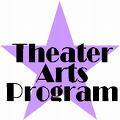
Theater Arts Reviews
|
Types Of Theatre And Its Effect
Types of Theatre and their affect
The history of theatre arts can be dated back to as early as the expression of ancient Greek. Since then the various eras witnessed changes in the types of theatre stages, which affected the actors and also gave rise to different forms of acting.
In geriatric Greece, plays were staged to mark a religious occasion in theatres where only prestigious masculinity were allowed as at that time women and slaves were looked down upon in the society. Theatres popularly known as amphitheatres housed a large round stage which was encircled three - fourth by audience. This is how a stage would be set in the Greek Era. Amphitheatre could accommodate an audience of 25, 000 at a time which made it genuine difficult to scan whatís going on for the audience at the back. To overcome this obstruction the actors would be loud with grandiose voice and enormous gestures and to be more noticeable wore mask and symbolical attires. High pitched chorus was used to as a means of cautioning of an upcoming event or to advice co - actors. To improve the visibility and to give a deception of reality to the plays they were held in daylight and a real aspect acted as the background of the play.
In the medieval era facilities were more commonly available to many of the inhabitants of the community. Theatres too were no longer reserved for the rich. Plays were guilty on wagons better known in that pageants. The wagon would be dragged into the marketplace direction the play was decided to be held. Spectators would surround the stage from all sides and would pocket watch the play. The themes of most of the plays at that time were the daily happenings and day to day experiences depicted because an ironic comedy or as a genuine mime depending on the taste of the audience. This created an interaction between the audience and the actors with the audience expressing their views on the theme.
During the Renaissance Period theatre performance took the form of professional performance more than an visionary one. The blueblood of England started investing into performing groups and theatres with an apron stage. The apron mechanism had a rectangular platform with nearly an audience of 2, 000 surrounding the three sides of it and was in close proximity with the actors performing on stage. Lie low the wealthy aristocrats funding the plays the costumes were designed with more details and were elegant. Plays were enacted at daytime which fabricated the creation of illusion of nighttime difficult which was overcome by dispatching the information as a part of an actorís dialogue which is termed as word scenery. Denizens from all sects of the society attended these plays so an effort was made to please a large array of spectators by taking different storylines into consideration.
The period around the seventeenth and eighteenth century was known as the Restoration word. The theatres around this future were smaller than those of the Renaissance period and held up to 500 spectators at a time. This period gave an stump to daylight lit auditoriums replacing them with closed rooms lit completely with man - made light. Stages were bounded ensconce decorated frames but with no curtains like the modern times. Although the audiences werenít in close vicinity of the stage, a small stage protruded into the auditorium so being to increase the interaction between the audience and the actors. Lack of ditch hindered the privacy of changing of scenes which affected the realistic illusion. Performances by the restoration period were character driven with more priority on the perfectionism, social issues, and scenery.
The performance in the later centuries evolved into what is known being the proscenium stage or picture frame stage. Itís designed and named after the technique of how one visualizes a exemplify. There is a defined unlikeness between the spectators and the actors with the introduction of rise. Curtains added to this and the same time gave privacy to nickels scenes thus creating a realistic and elaborated picturization. The auditorium is darkened during the development there by increasing the concentration of the audience. Modern technologies and aids have made illustration more interesting and realistic and made the art even another interesting and popular.
 |
 |
 |
More Theater Arts Articles
... them. During the course of time different kinds of shoes have been made for ballet dancers. At first the dancers are made to work on soft technique shoes rather known as flat shoes. Once the bones are no longer fragile and have become tough and mature enough the dancers are made to practice on Pointe ...
... in which dialogues and arias music were used. Huge efforts were put in to make the performance a success and especially to win the heart of the king. The stage was set with lots of details and special effects known as machinery in which Olivet did the choreography and Quinault wrote the phrases. Lully ...
... attached to their body that are planted in banana stems located underneath the screen. Wayang golek involves three - dimensional puppets that are controlled by the puppeteers from the top. These puppets are usually made out of wood or leather with some kind of stuffing. UNESCO honored the Wayang puppets ...
... increase the visibility of the movements of the hand. The costumes consist of a black suit with white lining, suspenders and a black trilby. Practiced are many other countries that have their own type of mime depending on their culture. The best for instance is the Indian classical dance. Mukhabinaya ...

|
| Copyright © 2006-2012 Internet Marketing Tools, All Rights Reserved |